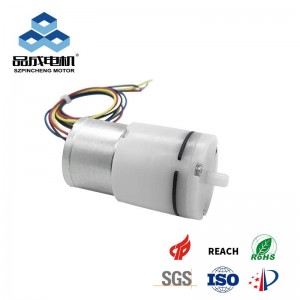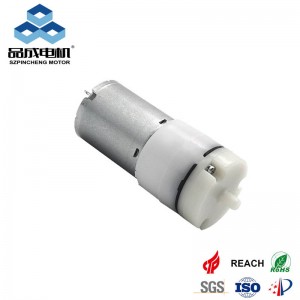In the world of compact fluid dynamics, the small air pump is an indispensable component, powering everything from medical devices and environmental monitors to personal care products. However, one of the most common challenges faced by users and engineers alike is the noise generated by these miniature powerhouses. If you have ever wondered, "Why does my tiny air pump sound so loud?", you are not alone. The sound is a complex byproduct of the very mechanisms that make these devices work. Understanding the sources of this noise, whether from a micro diaphragm air pump or a micro air compressor pumps, is the first step toward finding a truly small quiet air pump. This article will delve into the physics of micro pump noise, explore the common culprits, and highlight how advanced engineering, particularly in products like the micro air pump 3v and small 12 volt pump from Pincheng Motor, is solving this pervasive problem.
The Three Main Sources of Air Pump Noise
The noise from a small air pump electric can generally be categorized into three main sources: mechanical vibration, air pulsation, and electromagnetic noise.
1. Mechanical Vibration
This is the most significant source of noise in most micro pumps. The core function of a pump involves moving parts, and this movement inevitably creates vibration.
- Motor Vibration: The DC motor that drives the pump mechanism, whether it's a brushed or brushless type, has rotating components. Any slight imbalance in the rotor or wear on the bearings will cause the motor to vibrate, which is then transmitted through the pump casing and mounting structure.
- Diaphragm/Piston Movement: Pumps like the mini diaphragm air pump or those used in a mini air vacuum pump rely on a diaphragm or piston moving rapidly back and forth. This reciprocating motion, especially at high frequencies, generates significant mechanical energy that translates into audible noise. Poorly designed linkages or materials that lack sufficient dampening will amplify this effect.
2. Air Pulsation and Flow Noise
The very act of moving air creates noise. Air is not moved in a smooth, continuous stream but in pulses, especially in diaphragm and piston pumps.
- Pulsation: Each stroke of the diaphragm or piston releases a pulse of air. This rapid, cyclical release of pressure creates a distinct buzzing or humming sound. This is particularly noticeable in high-pressure applications, such as those requiring a micro vacuum pump 12v or a micro air compressor pumps, where the pressure differential is greater.
- Turbulence: As air is drawn into the pump (inlet) and forced out (outlet) through small orifices and tubing, the high-velocity flow creates turbulence, which manifests as a high-pitched hissing or whistling sound.
3. Electromagnetic Noise
Less common but still a factor, especially in lower-quality brushed DC motors, is electromagnetic noise. This is the high-frequency sound produced by the motor's commutator and brushes as they make and break electrical contact. While often masked by mechanical noise, it contributes to the overall sound profile.
The Pincheng Advantage: Engineering for Silence
For applications where noise is a critical factor—such as medical devices, personal diffusers, or quiet laboratory equipment—a standard small air pump simply won't suffice. The demand for a truly small quiet air pump has driven manufacturers like Pincheng Motor to invest heavily in advanced noise reduction technologies.
Pincheng’s approach to minimizing noise focuses on precision engineering at every stage:
- Precision Motor Balancing: We utilize advanced balancing techniques for our DC motors to virtually eliminate rotor imbalance, drastically reducing the primary source of mechanical vibration.
- Advanced Dampening Materials: Our pump casings and mounting systems incorporate specialized, high-density, noise-dampening polymers. These materials absorb and isolate the vibration generated by the diaphragm or piston, preventing it from radiating as sound.
- Optimized Airflow Dynamics: The internal structure of our pumps is designed to smooth out air pulsation. By using optimized valve designs and internal acoustic chambers, we convert the pulsed airflow into a much smoother, quieter output, even in our high-performance models.
Conclusion: Choosing Quiet Power
The noise produced by a micro air pump is a direct result of the physics of converting electrical energy into pneumatic power. While every small air pump electric will generate some sound, the difference between a disruptive buzz and a barely audible hum lies in the quality of engineering and manufacturing.
When selecting a pump for your next product, whether you need the compact power of a micro air pump 3v or the robust performance of a small 12 volt pump, prioritizing a small quiet air pump is essential for user satisfaction. Pincheng Motor is committed to delivering the quietest performance in the industry. Our range of precision-engineered pumps, including the micro diaphragm air pump and specialized micro vacuum pump 12v models, are built to the highest standards, ensuring that you get reliable, powerful performance without the noise. By choosing Pincheng, you are selecting a partner that understands the critical balance between power and silence, providing a superior solution for all your fluid and air handling needs.
you like also all
Read More News
Post time: Nov-10-2025




